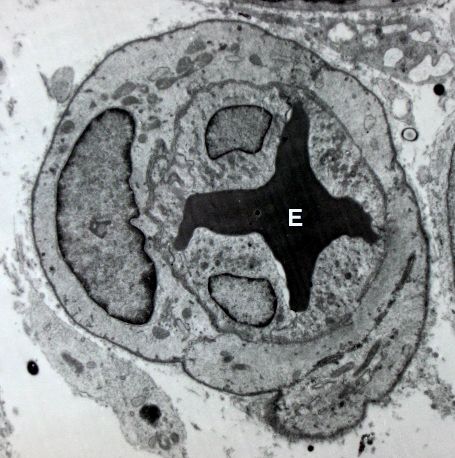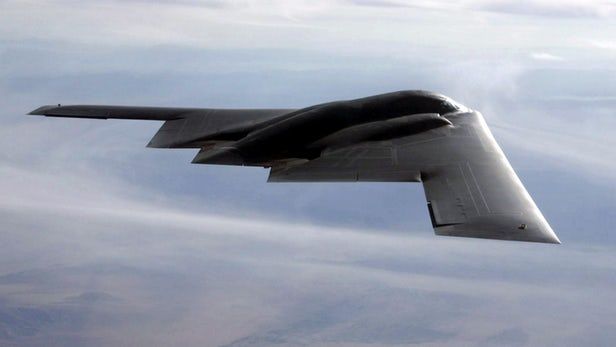Health service chief calls for affordable access to CAR-T, which modifies immune system to destroy cancer cells.
Sarah Boseley Health editor.
Thu 26 Apr 2018 13.29 EDT Last modified on Thu 26 Apr 2018 17.00 EDT.

Health service chief calls for affordable access to CAR-T, which modifies immune system to destroy cancer cells.
Sarah Boseley Health editor.
Thu 26 Apr 2018 13.29 EDT Last modified on Thu 26 Apr 2018 17.00 EDT.

Taking the supplement, dilation of subjects’ arteries improved by 42 percent, making their blood vessels, at least by that measure, look like those of someone 15 to 20 years younger. An improvement of that magnitude, if sustained, is associated with about a 13 percent reduction in heart disease, Rossman said. The study also showed that the improvement in dilation was due to a reduction in oxidative stress.
Older adults who take a novel antioxidant that specifically targets cellular powerhouses, or mitochondria, see age-related vascular changes reverse by the equivalent of 15 to 20 years within six weeks, according to new University of Colorado Boulder research.
The study, published this week in the American Heart Association journal Hypertension, adds to a growing body of evidence suggesting pharmaceutical-grade nutritional supplements, or nutraceuticals, could play an important role in preventing heart disease-the nation’s No. 1 killer. It also resurrects the notion that oral antioxidants, which have been broadly dismissed as ineffective in recent years, could reap measurable health benefits if properly targeted, the authors say.
“This is the first clinical trial to assess the impact of a mitochondrial-specific antioxidant on vascular function in humans,” said lead author Matthew Rossman, a postdoctoral researcher in the department of integrative physiology. “It suggests that therapies like this may hold real promise for reducing the risk of age-related cardiovascular disease.”

Stealth technology may not be very stealthy in the future thanks to a US$2.7-million project by the Canadian Department of National Defence to develop a new quantum radar system. The project, led by Jonathan Baugh at the University of Waterloo’s Institute for Quantum Computing (IQC), uses the phenomenon of quantum entanglement to eliminate heavy background noise, thereby defeating stealth anti-radar technologies to detect incoming aircraft and missiles with much greater accuracy.
Ever since the development of modern camouflage during the First World War, the military forces of major powers have been in a continual arms race between more advanced sensors and more effective stealth technologies. Using composite materials, novel geometries that limit microwave reflections, and special radar-absorbing paints, modern stealth aircraft have been able to reduce their radar profiles to that of a small bird – if they can be seen at all.

Elena Milova is at the Interventions to extend healthspan and lifespan 2018 conference in Kazan this week. This is an important conference in the aging research field, and it includes a variety of leading experts giving talks about their research. One of these experts is Andrei Gudkov, and Elena had the opportunity to talk with him about his research.
Dr. Andrei V. Gudkov, Ph.D., D.Sci, is a Scientific Co-Founder of Cleveland Biolabs, Inc. and has been its Chief Scientific Officer since June 2003. Dr. Gudkov serves as Chief Scientific Officer and Founder at Everon Biosciences, Inc. He co-founded Mega Biotech & Electronics Co., Ltd. and serves as its Chief Scientific Officer. Dr. Gudkov serves as Senior Vice President of Basic Science at Roswell Park Cancer Institute. He has over 25 years of experience in biomedical research. Prior to 1990, he worked with the National Cancer Research Center in Moscow (USSR), where he led a broad research program focused on virology and cancer drug resistance.
In 1990, he re-established his lab at the University of Illinois at Chicago, where he became a tenured faculty member in the Department of Molecular Genetics. In 1999, he defined p53 as a major determinant of cancer treatment side effects and suggested this protein as a target for therapeutic suppression. In 2001, Dr. Gudkov moved his laboratory to the Lerner Research Institute at the Cleveland Clinic Foundation, where he served as Chairman of the Department of Molecular Biology and Professor of Biochemistry at Case Western Reserve University. He has served as a Director of Cleveland Biolabs, Inc. since June 2003.

Sea-level rise and wave-driven flooding will negatively impact freshwater resources on many low-lying atoll islands in such a way that many could be uninhabitable in just a few decades. According to a new study published in Science Advances, scientists found that such flooding not only will impact terrestrial infrastructure and habitats, but, more importantly, it will also make the limited freshwater resources non-potable and, therefore, directly threaten the sustainability of human populations.
Most of the world’s atolls are in the Pacific and Indian oceans. The scientists focused on Roi-Namur Island on Kwajalein Atoll in the Republic of the Marshall Islands for their site study from November 2013 to May 2015. The Republic of the Marshall Islands has more than 1,100 low-lying islands on 29 atolls, is home for numerous island nations and hundreds of thousands of people.
Scientists from the U.S. Geological Survey, Deltares, National Oceanic and Atmospheric Administration, and the University of Hawai?i at Mānoa used a variety of climate-change scenarios to project the impact of sea-level rise and wave-driven flooding on atoll infrastructure and freshwater availability. The approach and findings in this study can serve as a proxy for atolls around the world, most of which have a similar morphology and structure, including, on average, even lower land elevations.

The ability to perform simple daily tasks can make a big difference in people’s lives, especially for those with spinal cord injuries. A UCLA-led team of scientists reports that six people with severe spinal cord injuries—three of them completely paralyzed—have regained use of their hands and fingers for the first time in years after undergoing a nonsurgical, noninvasive spinal stimulation procedure the researchers developed.
At the beginning of the study, three of the participants could not move their fingers at all, and none could turn a doorknob with one hand or twist a cap off a plastic water bottle. Each of them also had great difficulty using a cellphone. After only eight researcher-led training sessions with the spinal stimulation, all six individuals showed substantial improvements. The study participants had chronic and severe paralysis for more than one year, and some for more than 10 years.
From before the first session to the end of the last session, the participants improved their grip strength.

Nuclear power plants typically run either at full capacity or not at all. Yet the plants have the technical ability to adjust to the changing demand for power and thus better accommodate sources of renewable energy such as wind or solar power.
Researchers from the U.S. Department of Energy’s (DOE) Argonne National Laboratory and the Massachusetts Institute of Technology recently explored the benefits of doing just that. If nuclear plants generated power in a more flexible manner, the researchers say, the plants could lower electricity costs for consumers, enable the use of more renewable energy, improve the economics of nuclear energy and help reduce greenhouse gas emissions.
The team explored technical constraints on flexible operations at nuclear power plants and introduced a new way to model how those challenges affect how power systems operate. “Flexible nuclear power operations are a ‘win-win-win,’ lowering power system operating costs, increasing revenues for nuclear plant owners and significantly reducing curtailment of renewable energy,” wrote the team in an Applied Energy article published online on April 24.

Hard to believe but some people are worried that when rejuvenation biotechnology is available they may be forced to use it.
Might rejuvenation become an imposition?
Suppose that, on a nice day not too far into the future, while everything is going reasonably well in your life and you are enjoying yourself, you walk into the doctor’s office for a regular checkup. The doctor finds nothing wrong with you, but in order to minimize your risk of developing diseases that are likely to strike people in your age range, she recommends that you undergo senolytic treatment. The treatment is safe, with no serious adverse effects, it is administered simply through injections, and it is either state-subsidized or otherwise affordable. In your opinion, what are the odds that you would refuse the doctor’s prescription and say that you’d rather take the risk of getting sick?

Rain Design isn’t the first company to fall victim to the aggressive techniques Amazon uses to achieve market dominance. Although its retail site is the most visible of its business strands, the $740bn company has quietly stretched its tentacles into an astonishing range of unrelated industries. Google and Facebook might have cornered the online advertising market, but Amazon’s business successes now include groceries, TV, robotics, cloud services and consumer electronics.
With its profound knowledge of its customers, Amazon can move into almost any sector – striking fear into the hearts of rivals. And the $740bn company is ‘just getting started’
By Olivia Solon and Julia Carrie Wong in San Francisco
Tue 24 Apr 2018 11.32 EDT Last modified on Tue 24 Apr 2018 17.00 EDT.
News Brief: Researchers have created a miniaturized device that can transform electronic signals into optical signals with low signal loss. They say the electro-optic modulator could make it easier to merge electronic and photonic circuitry on a single chip. The hybrid technology behind the modulator, known as plasmonics, promises to rev up data processing speeds. “As with earlier advances in information technology, this can dramatically impact the way we live,” Larry Dalton, a chemistry professor emeritus at the University of Washington, said in a news release. Dalton is part of the team that reported the advance today in the journal Nature.